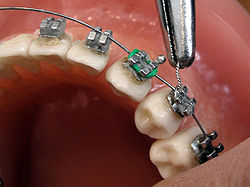We use cookies to help you navigate efficiently and perform certain functions. You will find detailed information about all cookies under each consent category below.
The cookies that are categorised as "Necessary" are stored on your browser as they are essential for enabling the basic functionalities of the site. ...
Necessary cookies are required to enable the basic features of this site, such as providing secure log-in or adjusting your consent preferences. These cookies do not store any personally identifiable data.
Functional cookies help perform certain functionalities like sharing the content of the website on social media platforms, collecting feedback, and other third-party features.
Analytical cookies are used to understand how visitors interact with the website. These cookies help provide information on metrics such as the number of visitors, bounce rate, traffic source, etc.
Performance cookies are used to understand and analyze the key performance indexes of the website which helps in delivering a better user experience for the visitors.
Advertisement cookies are used to provide visitors with customised advertisements based on the pages you visited previously and to analyze the effectiveness of the ad campaigns.
Definition, Scope, and History of Orthodontics
- Orthodontics is a dentistry specialty that addresses mal-positioned teeth and jaws.
- It includes the diagnosis, prevention, management, and correction of these issues.
- Dentofacial orthopedics, which modifies facial growth, is also part of orthodontics.
- Nearly 50% of the developed world's population has malocclusions that can benefit from orthodontic treatment.
- Orthodontic treatment may improve the quality of life for patients.
- Attempts to treat dental disorders date back to 1000 BC.
- Orthodontics as a modern science emerged in the mid-1800s.
- Norman William Kingsley and Edward Angle made significant contributions to the field.
- The concept of ideal occlusion and malocclusion classification system were introduced.
- Extraction and facial aesthetics became important considerations in orthodontic treatment.
Evolution of Orthodontic Techniques
- Cephalometric radiography was used to measure changes in tooth and jaw position.
- Functional appliances and extraoral devices were developed to amend growth patterns.
- The American Journal of Orthodontics was established in 1915.
- Advancements in adhesives allowed for the bonding of metal brackets to teeth.
- Lawrence F. Andrews introduced the straight-wire appliance system in 1976.
Treatment Duration and Approach
- Orthodontic treatment may require several months to a few years.
- Dental braces and other appliances are used to adjust tooth position and jaw alignment.
- Severe malocclusions may require jaw surgery as part of the treatment plan.
- Treatment usually begins before adulthood for easier adjustment of pre-adult bones.
- Diets low in fresh fruits and vegetables contribute to the prevalence of malocclusions.
Impact and Benefits of Orthodontics
- The health benefits of orthodontic treatment lack conclusive scientific evidence.
- Completed orthodontic treatment has been reported to improve quality of life.
- Orthodontics can improve facial harmony and aesthetics.
- Ideal occlusion and intact dentition are now prioritised in orthodontic treatment.
- Orthodontics aims to achieve proper interarchal relationships and tooth alignment.
Orthodontic Appliances and Techniques
- Orthodontic appliances are divided into removable and fixed types.
- Fixed appliances use rectangular archwires for tooth alignment.
- The Tip-Edge system allows for precise control of tooth movement.
- Edward Angle created four appliance systems used in orthodontics.
- The edgewise appliance became a mainstay for multibanded fixed therapy.
- Automatic rotational control and alteration in bracket slot dimensions are techniques used in orthodontics.
- Upper and lower jaw functional expanders are used for malocclusion treatment.
- Braces, including clear aligners, are commonly used for orthodontic treatment.
- Jaw surgery may be required for severe malocclusions.
- Low-level laser therapy, vibratory devices, and other methods can be used to reduce pain during treatment.
- Over 50% of patients experience relapse within 10 years following orthodontic treatment.
- Retainers are used to prevent relapse.
- Clear aligners, such as Invisalign or Byte, are a popular form of orthodontic treatment.
- Different countries have their own systems for training and registering orthodontic specialists.
Orthodontics is a dentistry specialty that addresses the diagnosis, prevention, management, and correction of mal-positioned teeth and jaws, as well as misaligned bite patterns. It may also address the modification of facial growth, known as dentofacial orthopedics.
 Connecting the arch-wire on brackets with wire | |
| Occupation | |
|---|---|
| Names | Orthodontist |
Occupation type | Specialty |
Activity sectors | Dentistry |
| Description | |
Education required | Dental degree, specialty training |
Fields of employment | Private practices, hospitals |
Abnormal alignment of the teeth and jaws is very common. Nearly 50% of the developed world's population, according to the American Association of Orthodontics, has malocclusions severe enough to benefit from orthodontic treatment,[citation needed] although this figure decreases to less than 10% according to the same AAO statement when referring to medically necessary orthodontics. However, conclusive scientific evidence for the health benefits of orthodontic treatment is lacking, although patients with completed treatment have reported a higher quality of life than that of untreated patients undergoing orthodontic treatment. The main reason for the prevalence of these malocclusions is diets with less fresh fruit and vegetables and overall softer foods in childhood, causing smaller jaws with less room for the teeth to erupt. Treatment may require several months to a few years and entails using dental braces and other appliances to gradually adjust tooth position and jaw alignment. In cases where the malocclusion is severe, jaw surgery may be incorporated into the treatment plan. Treatment usually begins before a person reaches adulthood, insofar as pre-adult bones may be adjusted more easily before adulthood.
From ortho- (“correct, straight”) + -odont + -ics.
orthodontics (uncountable)